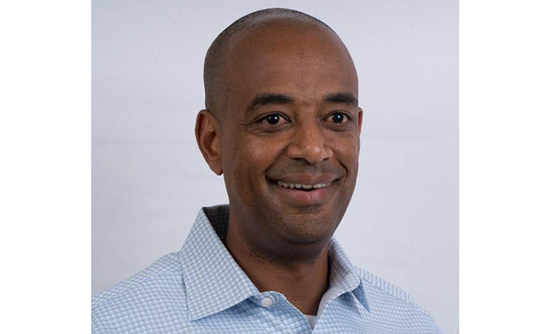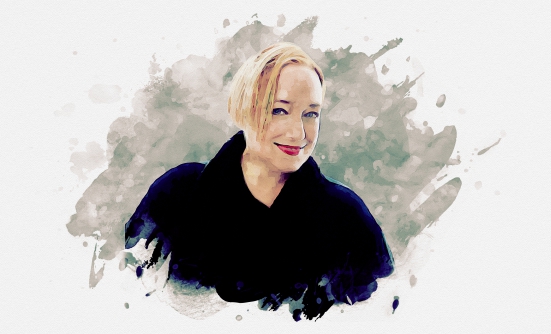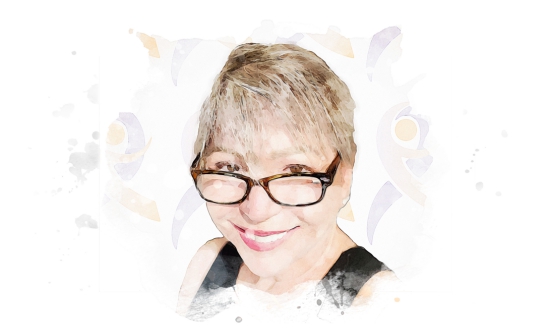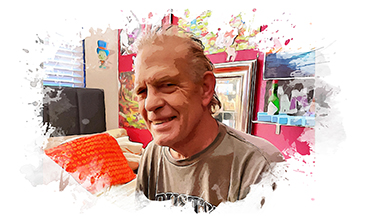When I was 25, I was diagnosed with full-blown stage IIIA multiple myeloma. That was 21 years ago. I was recently married, had just started graduate school, and was anticipating a full life ahead of me, when the doctor called me and said, “You have multiple myeloma. It’s highly treatable, but it’s not curable.” I did not understand the full extent of his statement. At this young age, I didn’t expect to be “sick,” let alone be told I had cancer. But who does?
If you have been diagnosed with multiple myeloma, you know that this is a disease for life; there is still no cure for this type of cancer. I want to share my story with you, to show you that this potentially short life, this turbulent life that any patient with multiple myeloma will go through, can still be spectacular, if you carry with you 3 necessary things.
The 3 Necessary Things
First, we need to have an abundance of hope. I believe hope is the anchor that keeps our ship floating and keeps it from drifting in the storm. Hope is necessary for anyone who is facing a cancer diagnosis. But hope requires a plan; hope without a plan of action is just a dream.
So the second thing we need is an actionable plan. You may need plan A, and in some cases plan B or C. But however much hope you have, and however well-executed your plan is, you will still need something else.
The third thing we need is to believe we have “it.” We need to believe we have what it takes to survive through the storm. We have to believe this so we could not only live with multiple myeloma, but so we could “live with, not for, multiple myeloma.”
Inspired by My Dad
I had a great teacher in my father, who showed me how to fight for one’s life. I was born in Ethiopia, which is a culturally rich but economically poor country. In the 1970s, my dad was diagnosed with tuberculosis, and getting proper healthcare in Ethiopia at that time was not easy. My dad was told he had a 10% chance of surviving tuberculosis, to which he responded, “Oh, that’s not zero.” So he “fought like hell,” and he survived tuberculosis and lived a full life with the motto, “Do unto others as you’d have them do unto you.”
Forty years after his triumph over tuberculosis, by then I was living in the United States, my dad was diagnosed with colon cancer. So you can imagine my surprise when he told me, “I learned a lot from you, when you were diagnosed many years ago with multiple myeloma.” When I asked “what?” he said, “I never heard you question ‘why me’? Actually, when you heard your mother ask ‘why him,’ you said, ‘why not me’?”
My dad was very content with his life when he died 4 months after being diagnosed with colon cancer. And that’s what I wish for myself, and for anyone living with multiple myeloma. I want all of us to “fight like hell, so we could live as long as possible, with the utmost quality of life as possible,” but also be very content with our life, and be able to accept whatever comes next feeling we have had a good life.
My Multiple Myeloma Diagnosis
I was diagnosed with multiple myeloma 21 years ago, when I was in my first year as a graduate student and working part-time as an intern. I am a computer scientist by training and work in information technology during the day. But this education did not prepare me to deal with cancer and to navigate the multiple myeloma journey. As a graduate student and a part-time intern making minimum wage, you can imagine I had little extra money to spare, and I was severely underinsured.
When I was first diagnosed in 1996, all the novel drugs available today for multiple myeloma were not yet available. There were different drugs used for multiple myeloma back then, mainly chemotherapy drugs. So I initially started therapy with the combination regimen known as VAD (which stands for vincristine, doxorubicin, and dexamethasone); this regimen was considered the standard induction chemotherapy then. After that, I opted not to collect my stem cells but not to have a transplant. That treatment combination with VAD put me in complete remission for 5 years, during which I did not have any treatment.
By the time I was done with my induction therapy with the VAD regimen, I was about $50,000 in debt. You can image how much burden that was for me and for my family. I was lucky, however, that this financial burden was sorted out over the next few years.
When my cancer relapsed (returned) after the initial treatment, as most patients with multiple myeloma would, I tried different dosing combinations of Revlimid (lenalidomide), oral Cytoxan (cyclophosphamide), and dexamethasone (a steroid), with the goal of balancing for the greatest efficacy and the least side effects possible. I was again able to achieve undetectable myeloma levels and discontinue treatment.
After my third relapse, Velcade (bortezomib) had already been approved by the FDA in 2003 for people with multiple myeloma who have already received other therapies, so I started taking Velcade. Today, the standard subcutaneous administration of this drug is once a week, but for me what worked was twice-a-week administration. Once-a-week dosing was able to keep my multiple myeloma stable so it would not progress further. But when I used Velcade twice a week, with dosing adjusted to prevent neutropenia (a side effect of this drug that reduces the white blood cells that fight infection), this allowed me to achieve what is known as stringent complete remission (that is, very good response with no symptoms) for the next 2.5 years, and without maintenance therapy.
But as most patients with multiple myeloma know, there’s an unpredictability aspect to multiple myeloma. Regardless of the medications used or complete remission achieved, over time multiple myeloma may relapse in the majority of patients, and these patients will have to start treatment again.
The good news, though, is that many novel treatments have become available in the past few years for treatment of multiple myeloma. These new treatments give patients new options and combination therapies. If one drug or one combination of drug doesn’t work well, the patient can try another drug or another combination.
After my fourth relapse, I was retreated with Velcade, and again my myeloma became undetectable. This time, though, my doctor and I chose to start maintenance therapy with the oral proteasome inhibitor Ninlaro (ixazomib), which was approved by the FDA in November 2015. Ninlaro has kept my multiple myeloma under check and in continuous stringent complete remission, with no detectable myeloma markers. However, I know myeloma could still be lurking, and I need to keep my vigilance.
My Living-with-Myeloma Vision
My living-with-myeloma vision statement is very simple: live as long as possible, with the greatest quality of life possible.
Since my initial diagnosis, I have been really lucky. I graduated from graduate school with a degree. I’ve been gainfully employed for 20 years. I saw my parents celebrate their 52nd wedding anniversary, and I saw my niece and nephew graduate from college. And my wife and I have celebrated our 23rd wedding anniversary.
On top of all this, I have been able to travel the world and share my multiple myeloma story, and share the hope of living with this disease. This is, in part, thanks to the revolution that has happened in the diagnosis, treatment, and overall care of patients with multiple myeloma over the past couple of decades.
I also lead one of the largest support groups for multiple myeloma in North America. From 1996 to 2000, 100 families joined our support group. Today, only 3 of those are alive. Every month, on average, we continue to lose 1 patient. And when somebody doesn’t show up for one of our meetings, I wonder, “is this their month”? So as much progress as has been made over the past several years, more progress remains to be made.
Building a Team
Living with multiple myeloma, I know that the disease will most certainly relapse; falling down is almost certain, side effects are almost always certain. But I choose to get up and fight. I have also learned that I don’t have to fight these battles by myself. I have built a team to help me in this fight.
For my team to work together, for me to communicate what my preferences are, what my choices are, what my quality-of-life requirements are, I need to educate myself. This shared decision-making model not only maximizes the disease outcome, it also maximizes the quality of life and minimizes treatment side effects. So I really need to be part of my treatment team. I need to keep an ongoing dialog and relationship with my doctors and my healthcare providers, because at the end of the day, I am a key stakeholder in my care. My life, and the quality of my life, depend on it.
In my years of living with multiple myeloma, being around other patients, and participating in patient advocacy activities, I have seen that those who have access to novel therapies and better care, and have participated in their own care, tend to live longer and can integrate multiple myeloma into their life.
The Future
Once you have multiple myeloma, you have it for life, and your life will change forever. Your loved ones’ lives will also change. But with recent advancements in the treatment of multiple myeloma, having multiple myeloma is no longer an immediate death sentence.
The myeloma community is grateful for the progress made over the last many years. But, we also understand there is a long way ahead of us. We are all in this together, so we need to actively participate in our own care, but as importantly pay it forward and advocate for others.
My story is in the making—my journey is not finished. I have a life to live and things to accomplish. I also have more options to consider in treating my multiple myeloma in the future. My goal is to make sure I don’t close the door on the treatment of tomorrow when the time comes. I do this by optimally using the treatments of today, by building the right relationship with a myeloma specialist, surrounding myself with the best team, and advocating for myself and on behalf of others, and paying it forward.
















